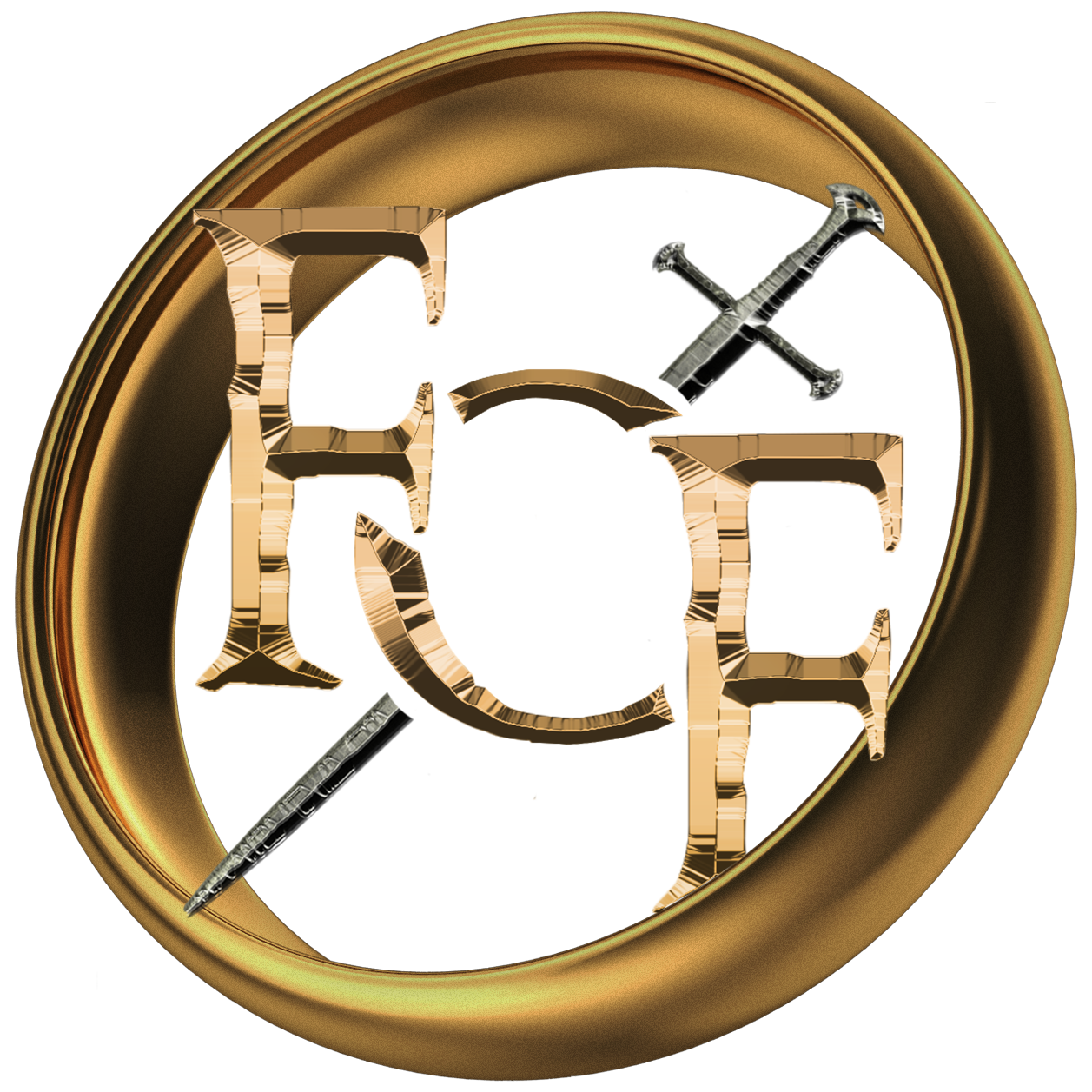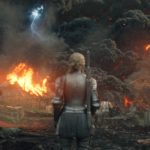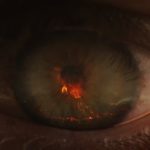
The Rings of Power: Our In-depth Analysis Of Episode Seven “The Eye”
Mae Govannen, mellyn!
Welcome back once again to our classic weekly appointment dedicated to analyzing the episodes of The Rings of Power. Also in this week the direction is entrusted to the experience of Charlotte Brändström, while Jason Cahill returns to the writing side. It is important to underline that this is the penultimate episode of the first season, which has the fundamental task of accompanying us towards the grand finale. Without wasting any more time, let’s dive into our analysis.
Tonight's #RingsofPower reaction stream will be with my friends @RealStevenStark of @HereBeDragonsYT, and @NBangen from the @FellowshipFans crew (also the voice of Melian from my Silmarillion Explained series!).
Join us in just under an hour!
?➡️ https://t.co/CXopXYkaXR pic.twitter.com/ICeePUS6c2
— Voice of Geekdom (@VoiceOfGeek) October 8, 2022
Mordor
The volcano has awakened, and the “black earth” is finally born. The destruction brought by the fire mountain has tragically swept over the villages in the south, bringing death, destruction and flames. Galadriel awakens after being hit by the volcano’s clouds, and this event seems to have profoundly changed her. In fact, we see her wiser and well aware of the tragic nature of that situation, and conflicts with herself begin to arise within her. Finarfin’s daughter finds Theo in the destroyed village and takes him with her, guiding him to the refuge of the survivors. As the two walk to their destination, we have several dialogues centered around guilt and inner conflict. Galadriel talks about larger drawings and heart-darkening actions, concepts that are extremely present and deeply rooted in Tolkien’s books. The Nolde also tells about Celeborn (finally, I would say), and we discover that she believes him dead in the war since she has never seen him again after the fall of Morgoth. Of course her beloved husband isn’t dead at all, and this dialogue is a blatant clue that we’ll see him in future seasons, and it is also important to say that the production needs this television expedients in order to create phatos in the audience.
Drop your craziest and wildest theories on how Celeborn “died” pic.twitter.com/axQGN0FarA
— Fellowship of Fans (@FellowshipFans) October 9, 2022
Also very beautiful is the description of how Galadriel and Celeborn met, inspired by the moment when Tolkien himself met his future wife and life partner Edith Bratt. Before reaching the ridge, the two (Theo and the commander of the northern army) come across a group of orcs that are patrolling the area, and at that moment Charlotte Brandstrom makes a beautiful quote to the “Fellowship of the Ring”, creating a scene identical to that of the Nazgul who “sniffs” the hobbits under the roots of a large tree. Meanwhile the Numenoreans are moving away from the destruction of Mordor, heading for the coast to erect a garrison to house the survivors of the Southlands. Miriel and Valandil failed to save Ontamo, who is found dead under the rubble, while Isildur was engulfed by wood and flames, and is believed dead (here too…expedients 😉 ). Elendil, once he hears the news, throws himself into despair, and resentment towards Galadriel begins to arise in him, since it was she who encouraged this expedition. Miriel also appears to have lost her sight, which is actually (honestly) very weird, as this is a deviation from the books that could be very relevant on the show. The queen regent, however, promises Galadriel that Numenor will return in strength to destroy the orcs, renewing the union of intent with Galadriel. What about Halbrand? The “King of the South” is found seriously wounded and taken to a tent to be treated, but Galadriel, after seeing him, decides to take him to the Eregion (so it seems) to be treated with elven medicines. In the last scene of the episode we also see Adar and his orcs galvanized by the success of their plan, and it is at that moment that the director shows us the name change of the Southlands, which officially becomes Mordor.
According to art director Alex Disenhof no green screen was used in the aftermath of Orodruin- it was all camerawork, practical effects, and post-production. Color(correct) me impressed! #TheRingsOfPower pic.twitter.com/q7re8Dd75F
— Fellowship of Fans (@FellowshipFans) October 10, 2022
Khazad-Dum
In Khazad-Dum Elrond officially asks King Durin III to allow the elves access to the mines of Mithril, in exchange for valuable timber from Lindon for several centuries and venison, as well as a lasting and powerful alliance. After confronting his son, the lord of the future Moria decides not to help the Eldar, since such an operation would put the safety of his people at great risk. This conversation is so beautiful, beacuse Durin III wisely talks about the Valar and their designs for all the people of Middle-Earth (we can also see the Axe of Durin the Deathless <3), and he exlplains his son that go agains their will could be very dangerous. Obviously Durin IV disagrees with his father’s thinking, and tries to persuade him in every way to change his mind, since the life of his friend is also at stake. Upon learning of the King’s decision, Elrond greets Disa and Durin IV in a tearful scene, but just as the half-elven appears to leave, the dwarven couple notices that Mithril wipes out corruption from Lindon’s golden leaf, and calls Elrond back to find a solution.
Did he make the right call, or no? #TheRingsOfPower #durin pic.twitter.com/RroudCAGp5
— Fellowship of Fans (@FellowshipFans) October 7, 2022
Durin and Elrond attempt to dig a tunnel for the Mithril alone, in a scene that once again shines with their splendid friendship. The two are the perfect example of the union of peoples of different races according to Tolkien’s own ideas, which is why their relationship is the one that currently stands out above all the others in the show. Their plan is however discovered by Durin III himself, who goes on a rampage and bans Elrond out of the kingdom. After that we have another confrontation between the two dwarves, but this time the conversation ends in anger, and in the end the King decides to remove the golden collar from his son, who indicates him as the heir of the kingdom. Durin IV feels heartbroken and disappointed in himself, but his wife Disa always manages to be an extraordinary sidekick, and after giving him strength she promises that once they reign, they will dig even deeper in the mountain. Meanwhile Durin III has the tunnel leading to Mithril sealed, and it is at that moment that the Lindon leaf is thrown into the great depths of the mountain, where “Durin’s bane” is shown. Here, too, a clarification is necessary: the Balrog obviously has not literally “awakened”, but that scene serves to make us understand that he is there, waiting for the tragic events of Moria to take place.
?If you like it then you should have put a ring on it ? #TheRingsOfPower pic.twitter.com/m6IuBP7oy8
— Fellowship of Fans (@FellowshipFans) October 9, 2022
Rhovanion
The hobbits have finally come to the “grove”, a beautiful orchard located on a green hill. Also in this scenario we can see the effects of the Orodruin eruption, as some trees have been incinerated or dried up by the lava rain. At this point the Meteor Man is asked to fix the situation with his powers, and we can notice his suffering as he begins to touch the dying tree, as he seems to love nature. The mysterious character casts a spell that at the moment seems to have no effects, and subsequently, after a chat with Sadoc (who shows him the way to follow) he leaves. Very beautiful is the scene in which Nori gives him a freshly picked apple as a sign of friendship to greet him after all this time spent together. The more attentive will also have noticed that Sadoc indirectly mentions the Ents (“some trees speak”) and what one day will be called Mirkwood, but which in the Second Age took the name of Greenwood the great.
The next morning the harfoots find the orchard chock full of fruit-bearing trees, a clear sign that the Stranger’s magic has taken effect. The halflings then prepare to celebrate and stock up, but it is during the harvest that Poppy notices big footprints, a clear sign that the mystics are there. The priestesses have reached that area guided by the traces of magic left by the Meteor Man, maybe believing that he is Sauron. In the night the three arrives at the grove, and head towards the tree that has been touched by the “Big Fella”, trying to analyze it to understand which direction to take. At that point Nori comes out into the open and tries to mislead them, thinking he can help her friend in this way. The mystics approaches and remains impassive to Largo Brandyfoot’s threats, and that’s when The Dweller manifests her powers. The presumed priestess absorbs the fire of a torch, and blowing from the palm of her hand manages to materialize the flames all over the orchard, destroying the hobbits’ camp. These characters continue to be a mystery, but in my opinion, even today, the most concrete possibility is that they are priestesses of the cult of Melkor, determined to find Sauron and support him in his dominion of Middle Earth. The fact that they have “powers” (so it would seem), could be linked to the dark arts that these characters, according to the books, were endowed with (Dark Numenoreans and Morgoth / Sauron servants). We hope the last episode tells us more, but I admit that these characters particularly intrigue me. Returning to the hobbits, the day after the destruction of the orchard they decide to form a team and go to the aid of the Stranger, for fear that he will meet the mystics, and this worries me a lot about their safety.




No Comments